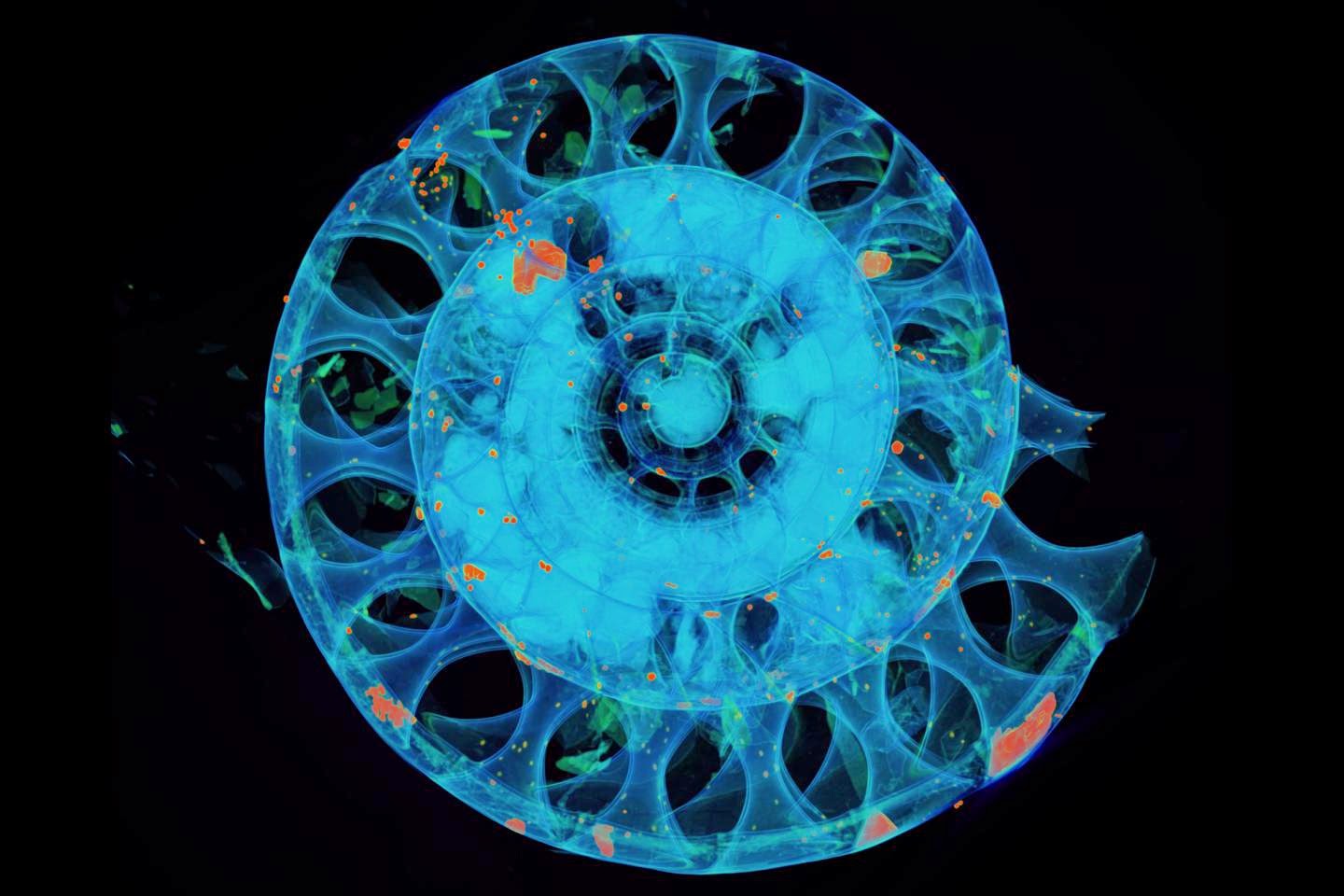
Using state-of-the-art imaging techniques, palaeontologists at the Ruhr-Universität Bochum (RUB) have been examining extinct marine creatures. Quantitative analyses provide new evidence that ammonites were able to swim using their shell – very much like the recent nautilus. For the purpose of the study, the researchers, together with partners from the industry, developed an evaluation process for high-res CT images. The science magazine “RUBIN” reports about the results.
Method established using the shell of recent nautilus
Ammonites had a visceral mass that was protected by a helical shell with several chambers. One theory postulates that the creatures lived at the bottom of the sea. Another claims that they were able to swim by using their shell with its gas-filled chambers to compensate for the weight of their shell and soft body, rendering them neutrally buoyant. Together with his team, RUB researcher Dr René Hoffmann investigated how much buoyancy an ammonite shell could generate. First, the palaeontologists from Bochum developed a reliable evaluation technique for their CT images, using the nautilus shells as a test object. Their method now enables them to precisely ascertain the volumes of the examined shells and to calculate their weight, as well as the volumes of the gas-filled chambers. The data thus gathered indicate the buoyancy generated by the shell. In order to clarify if the ammonites were able to swim, the researchers need to know if their shell provides sufficient buoyancy to compensate the weight of the visceral mass and the shell. They estimated the latter, basing it on observations of the nautilus animal.
Technique requires special fossils
For the CT analysis, René Hoffmann needed hollow fossilised ammonites. In order to find them, he travelled to Russia and Japan, to name but two. Together with PhD student Robert Lemanis, he analysed a 0.98 millimetres large ammonite hatchling. The result: three to five gas-filled shell chambers would have been sufficient to enable the ammonites to swim freely in the water directly after hatching. The examined shell had eleven chambers. How many of them existed in the moment of hatching, however, cannot be ascertained – the larger the molluscs became, the more chambers they created. Still, the RUB analyses showed that the hatchling would not have been condemned to dwelling at the bottom, even if only one chamber had been filled with gas; using active swimming motions, the young ammonite would have been able to move around freely in water and stop itself from sinking.
Reference:
R. Lemanis, S. Zachow, F. Fusseis, R. Hoffmann (2015): A new approach using high-resolution computed tomography to test the buoyant properties of chambered cephalopod shells, Paleobiology, DOI: 10.1017/pab.2014.17
Note : The above story is based on materials provided by Ruhr-University Bochum.










